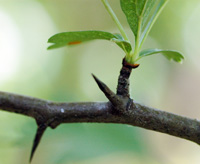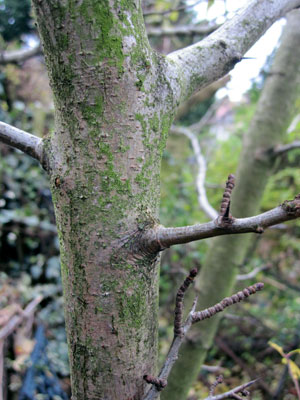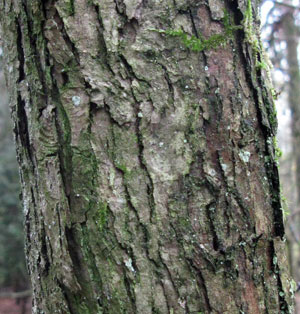Hawthorn
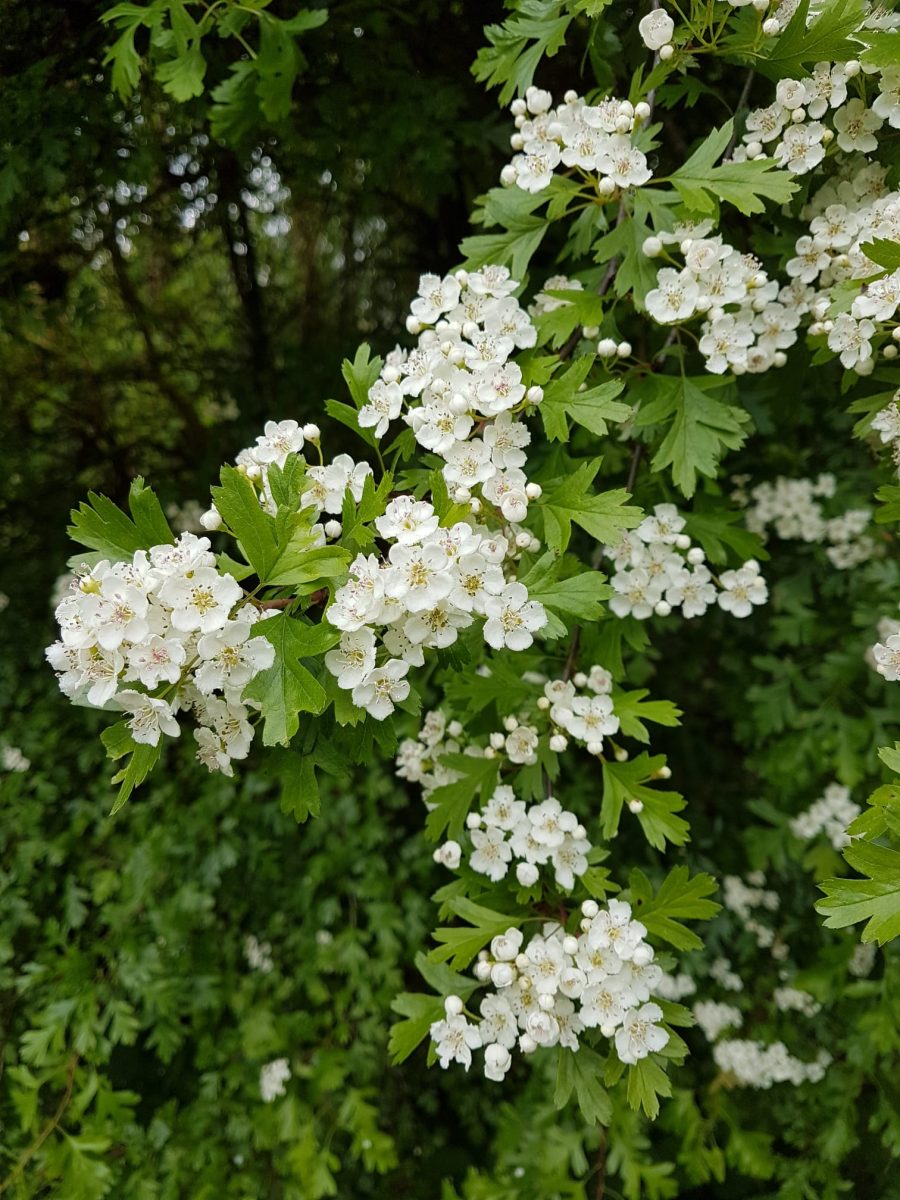
Hawthorn is sometimes known as quickthorn, thorn apple, May-tree, or whitethorn (Crataegus monogyna). Hawthorn can be a shrub in a hedgerow or it may grow into a small tree 5 to 12 metres tall. The young stems of the hawthorn bear sharp thorns - it is these that make for an 'impenetrable' hedge that is so useful in keeping farm animals 'penned in'. Hawthorn was much planted at the time of the Enclosures (which started in Tudor times). A hawthorn-rich hedges offers food and micro-habitats for many insect / arthropod species. It is also a home for many birds and small mammals. Hawthorn wood is hard and prized for its grain.
Leaf
Simple leaves that are roughly as broad as they are long. They are small and deeply lobed, so that each leaf almost looks divided. The leaves grow in a spiral arrangement along the long shoots, but grow in clusters on spur shoots (these bear the flowers and later the fruits).
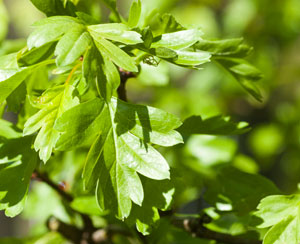
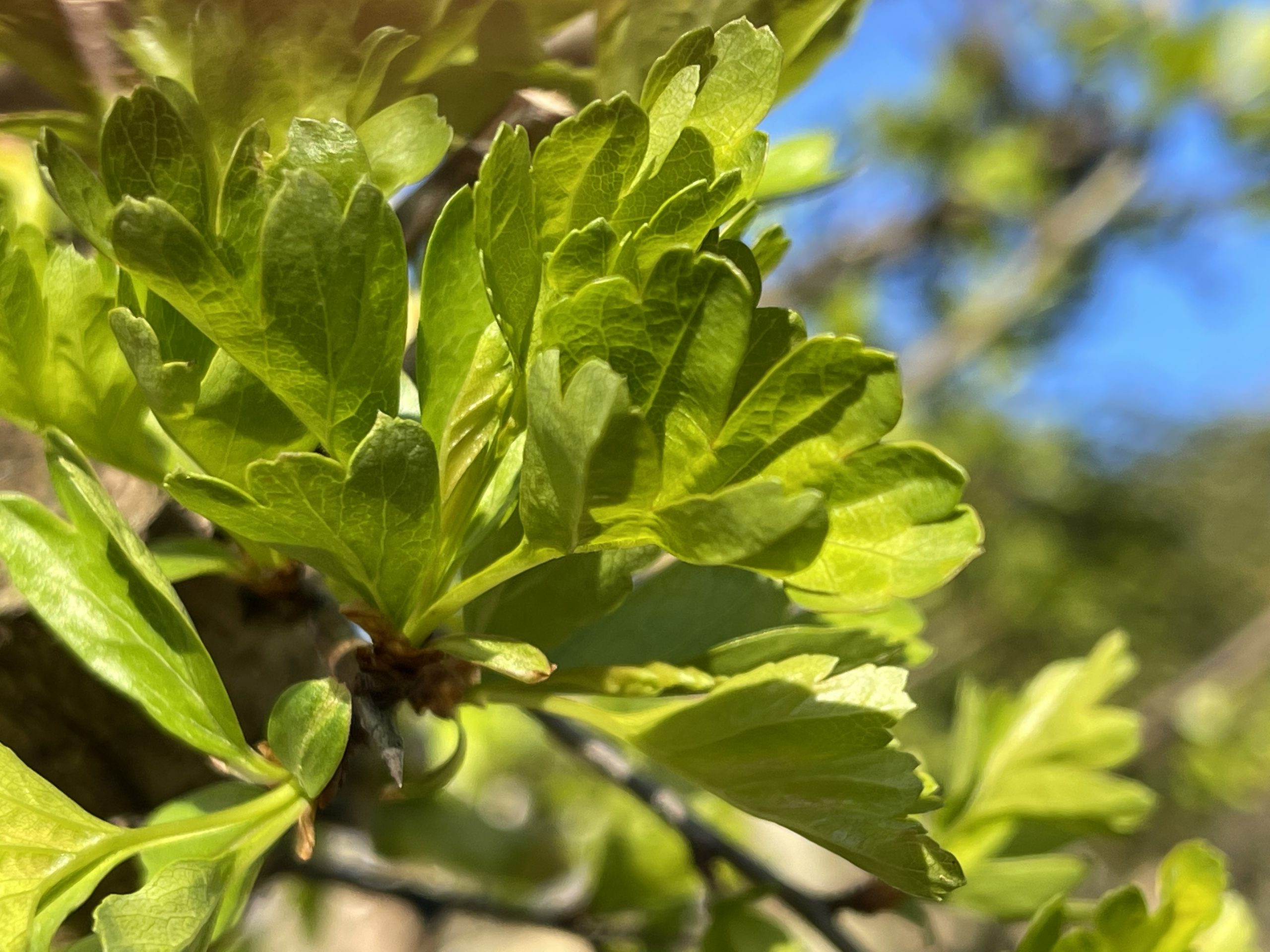
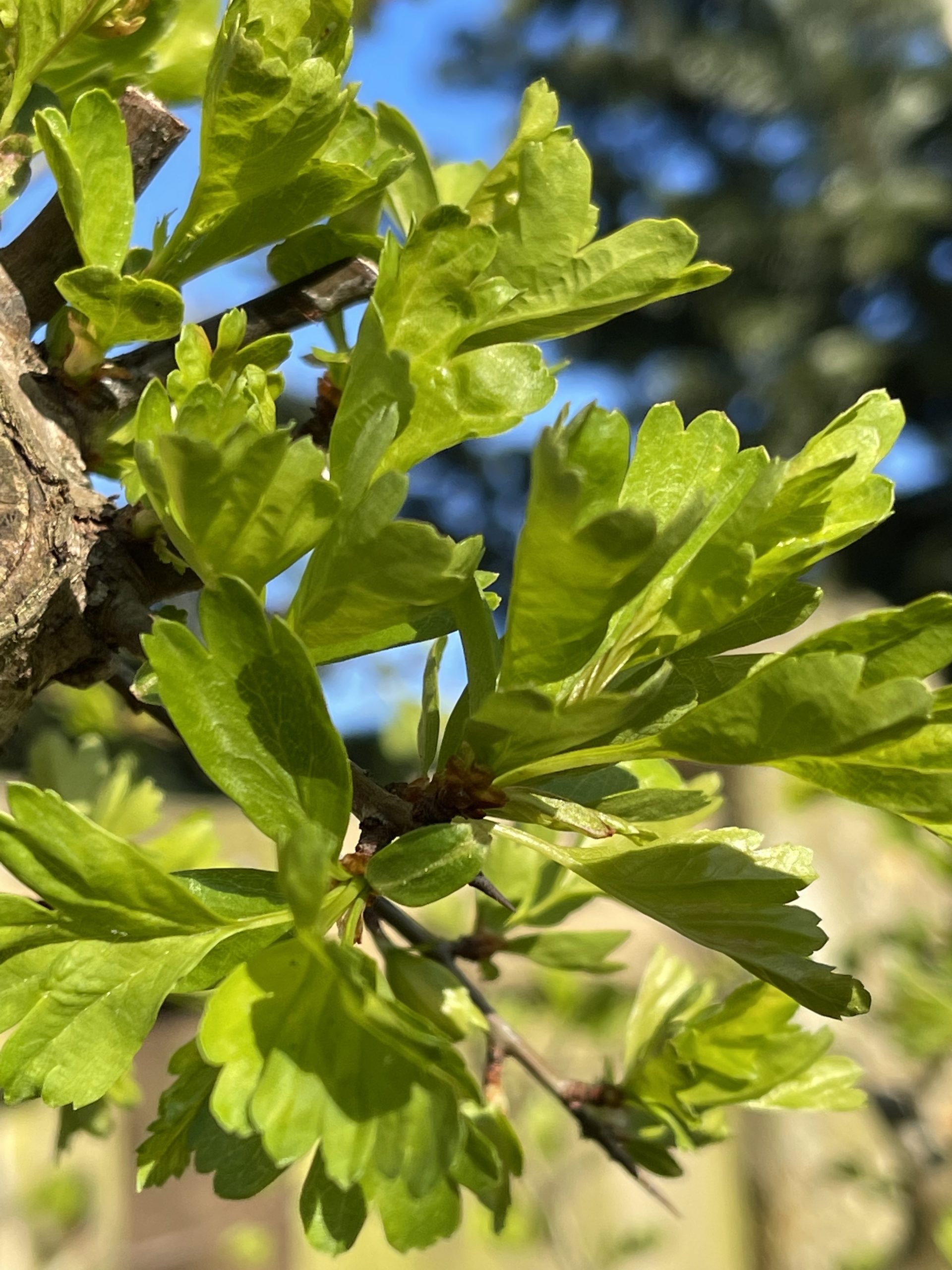
Buds, Bark & Stem
/Very young stems are reddish in colour, and the young twigs have spikes or thorns along them - hence its name! Thorns are derived from shoots. they may be branched or not, may or may not have leaves (but they do have vascular tissue within them). The thorns of Hawthorn sometimes have leaves. The bark is brown, sometimes with occasional 'orange patches'. As the shrub / tree ages it may developed a very gnarled / aged appearance. Depending on location, the bark may sometimes have green algae present.
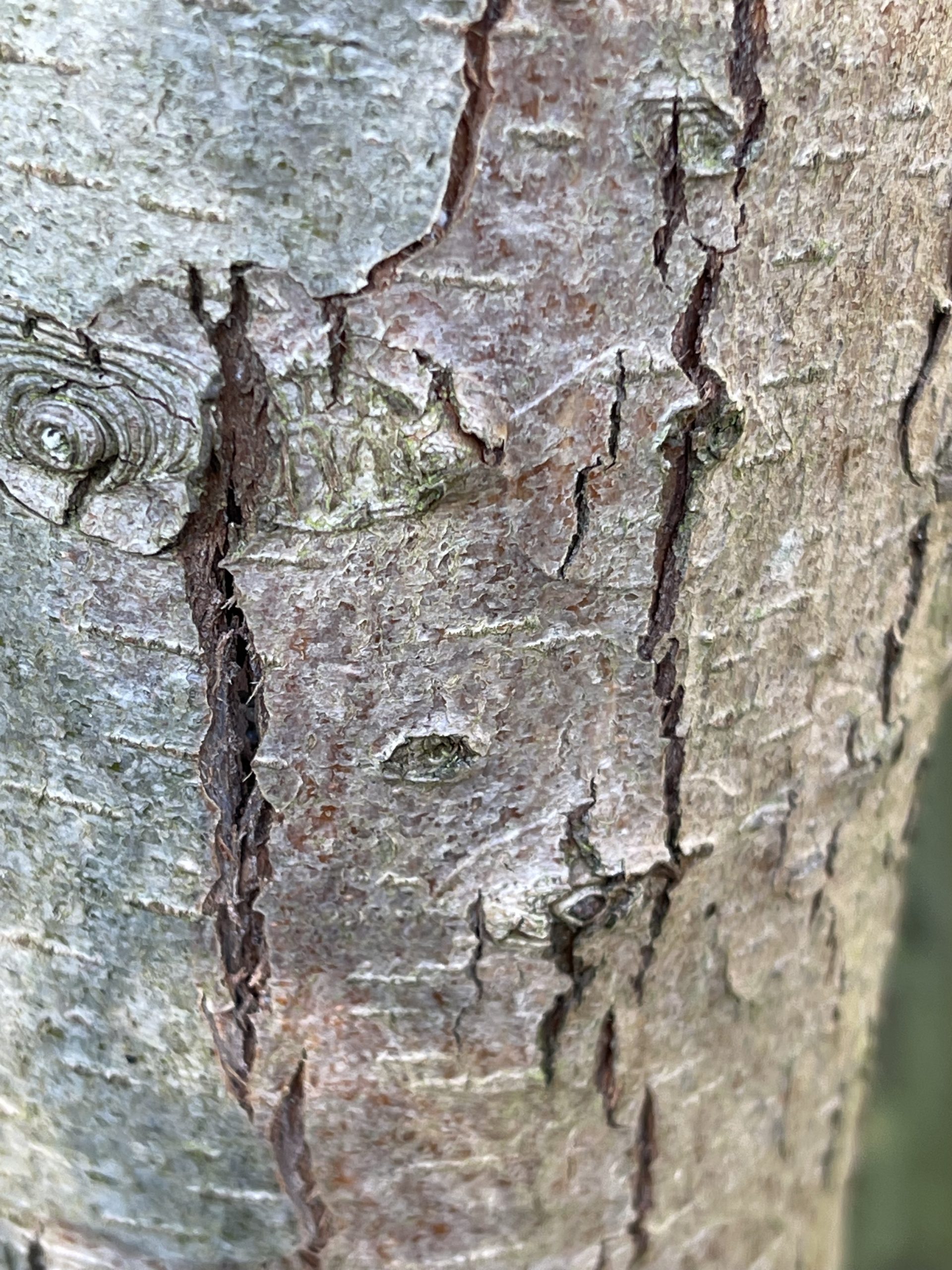
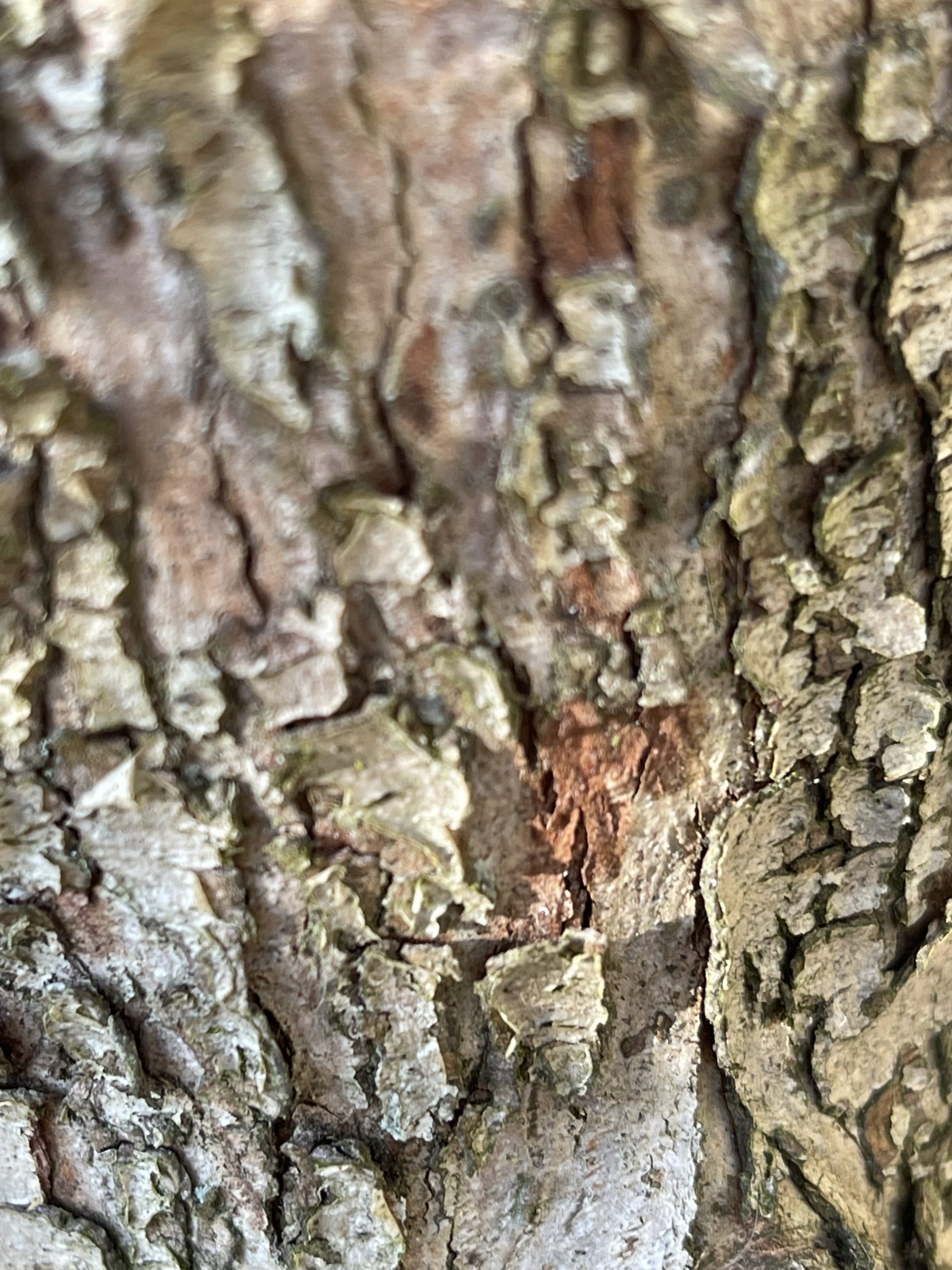
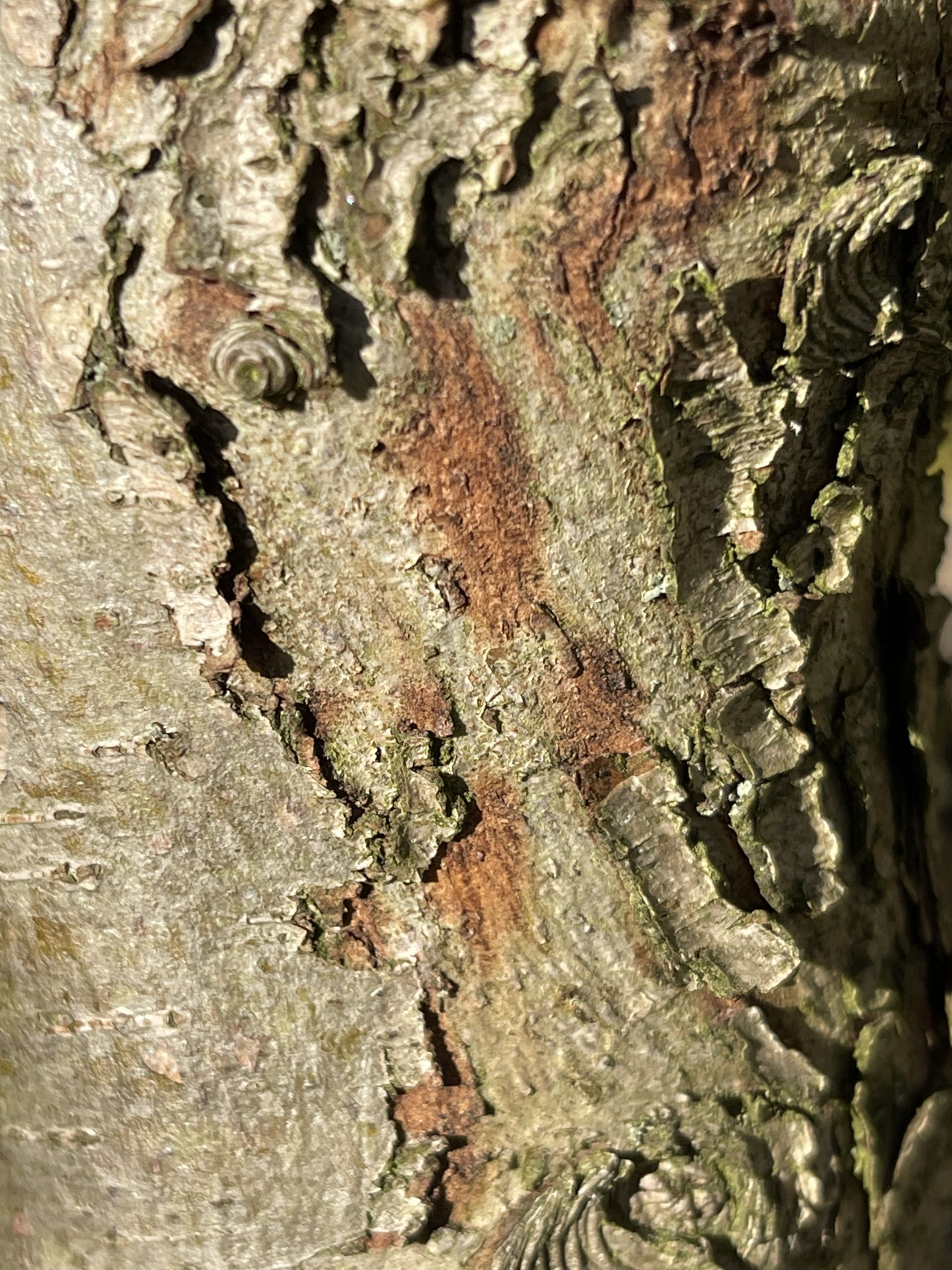
The thorns
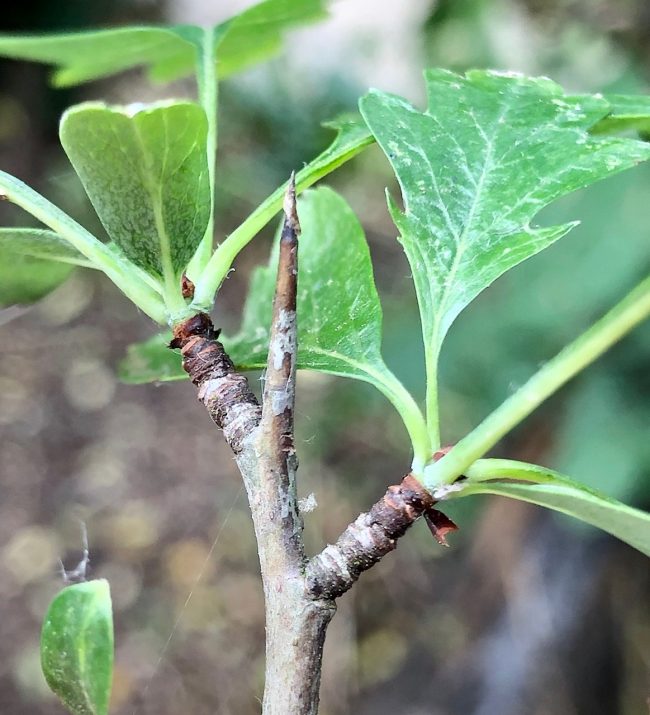
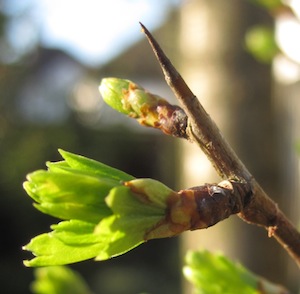
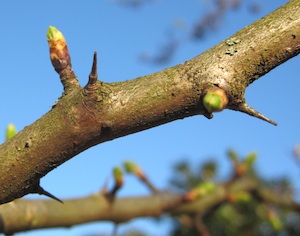
Flowers and Fruits
Hawthorn usually flowers in early Spring, this is known as ‘May Blossom’. The tree or bush is covered with a profusion of small, white flowers. The flowers appear after the leaves on Hawthorn, whereas on Blackthorn or Sloe (Prunus spinosa) the flowers appear on bare branches before the leaves. The Midland Hawthorn (Crataegus leavigata) may have pink flowers. In the autumn, the flowers form dark red berry-like fruits (about 1 cm) known as ‘haws’. These are often collected to be used in the making of jams, jellies etc.

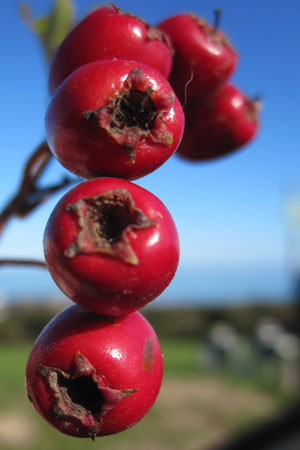
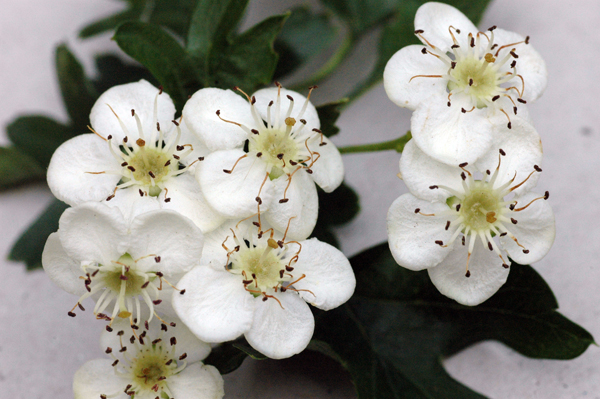
Hawthorn Gallery
